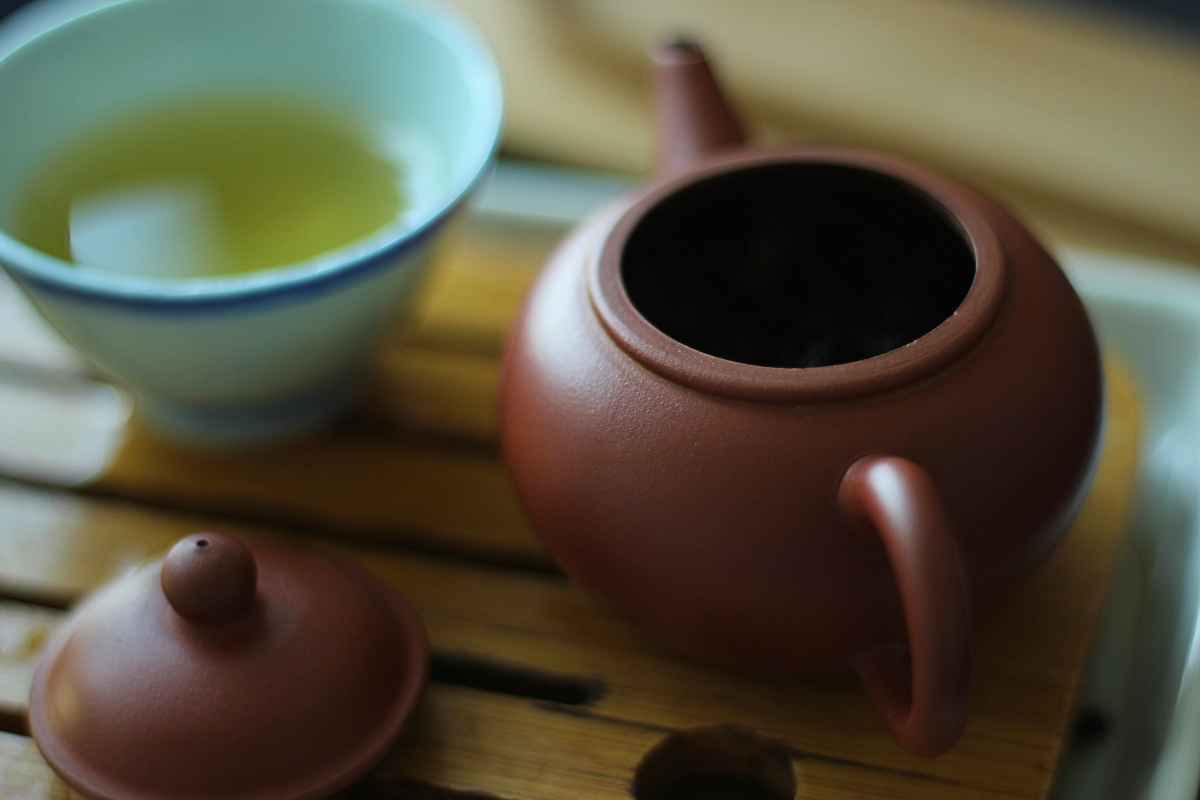When I started drinking loose leaf tea, I visited a wonderful tea house and they had a really fruity black tea. Smelling the Wild Fengqing Red Tea from Ho Yum Tea brought me back a couple of years because the aroma was super fruity and it reminded me of that one time at the tea house! Pink from Ho Yum Tea sent me this sample to taste and see how I like it.
Wild Fengqing Red Tea
This tea comes from the outskirts of Fengqing town in Lincang. It’s a red tea (frequently referred to as black tea in the west) from Yunnan province so it’s classified as dian hong. This literally means ‘Yunnan red’, so a red tea from Yunnan province.

Don’t know where to buy tea online? I made a list of over 300 online tea shops and I keep updating it regularly. You can check it over here
The tea was made using the Da Ye Zhong varietal, which is the same varietal used for puerh tea. The leaves could have been used to make puerh, but they were processed in a way to make red tea. It’s spring 2021 material that has been tested and it’s free of heavy metals and pesticides.
Tea Tasting
- Water 99°C
- 5g for a 120ml porcelain gaiwan
I see medium-sized and large leaves that are a bit twisted. The aroma is insanely fruity with hints of lychee, wild berries, and elderflower. It reminds me of a cocktail I once drank with elderflower. I’m also getting notes of an old red wine barrel.

Infusion 1 (10 sec): it feels gentle and delicate with a slight minerality. Some of the fruits that were so prominent in the aroma are peeking through already. Wild berries appear, almost disappear and come back to linger in the aftertaste. Clean and pure tea.
Infusion 2 (15 sec): the aroma of the leaves has a strong maltiness to them when I smell them after brewing. Malt is also coming through in the infusion itself. This maltiness has an underlying fruitiness with hints of wild berries. I feel these become stronger towards the finish and they stay on the palate for a while.
Infusion 3 (20 sec): I’m still getting subtle notes of malt and these stay around for a while. The fruitiness is more noticeable at the start of the infusion and stays a bit under the radar. You feel it’s there, but it’s subtle. It does come back in the aftertaste and I’m getting notes of elderflower that linger for a long time.
Infusion 4 (25 sec): this one is similar to the previous infusions. I feel the maltiness has decreased and it’s fruitier. Wild berries and elderflower are intertwined and gracefully carry you through this infusion. Really tasty infusion!
Infusion 5 (30 sec): no big changes but the maltiness has increased and pushed the fruitiness to the background. The fruitiness is lurking beneath the surface and it shows itself in the finish and especially in the aftertaste, which lasts really long and tastes like summer.
Infusion 6 (40 sec): this one is malty with a slightly fruity finish and aftertaste.
Conclusion
This was such a gentle and delicious tea! It was definitely fruity with notes of elderflower, lychee, and wild berries. The aftertaste lasted really long and it was a delight to taste this Wild Fengqing Red Tea.
The aroma was quite remarkable as well. Prominent lychee and elderflower in combination with an old wine barrel full of red wine.
If you want to buy this tea, click here.




